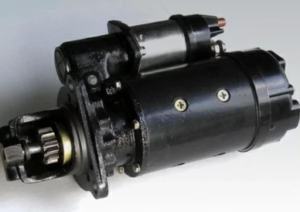
Proper starting and stopping procedures are crucial for extending the operational life and reliability of Detroit Diesel 53 Series engines. These guidelines focus on achieving optimal performance while minimizing wear and potential damage during routine operation.
Parts Catalog for 353 Detroit Diesel Marine Engine
Parts Catalog for 453 Detroit Diesel Marine Engine
Parts Catalog for 6V53 Detroit Diesel Marine Engine
Parts Catalog for 8V53 Detroit Diesel Marine Engine
Starting Procedures

Pre-Start Inspections
- Check Fluid Levels:
- Ensure that the oil level in the crankcase is within the recommended range. Low oil levels can lead to inadequate lubrication and potential engine damage.
- Verify that the coolant reservoir is full. Adequate coolant prevents overheating and ensures efficient operation.
- Inspect Fuel System:
- Check for air in the fuel lines. Airlocks can prevent proper fuel delivery, causing difficulty in starting or irregular operation.
- Confirm that the fuel shutoff valve is open and functioning correctly.
- Battery and Electrical Connections:
- Ensure the battery is fully charged, and all electrical connections are clean and secure.
- Verify that the starter motor is operational.
- Safety Checks:
- Inspect belts, hoses, and seals for wear or damage.
- Ensure all guards and shields are in place.
Starting the Engine
- Preheat in Cold Conditions:
- If operating in low temperatures, use an appropriate preheating system, such as block heaters or glow plugs, to aid in starting.
- If operating in low temperatures, use an appropriate preheating system, such as block heaters or glow plugs, to aid in starting.
- Turn the Ignition Key:
- Switch the ignition to the start position without pressing the throttle. Allow the engine to crank until it starts.
- Switch the ignition to the start position without pressing the throttle. Allow the engine to crank until it starts.
- Monitor Engine Parameters:
- Check oil pressure immediately after the engine starts. A delay in oil pressure buildup indicates potential lubrication system issues.
- Observe coolant temperature to ensure the system warms up gradually.
- Warm-Up:
- Allow the engine to idle at low RPM for 3-5 minutes. This warm-up period ensures proper oil circulation and reduces thermal shock to engine components.
- Allow the engine to idle at low RPM for 3-5 minutes. This warm-up period ensures proper oil circulation and reduces thermal shock to engine components.
Operating Recommendations
Avoid Abrupt Load Application
- Gradually increase engine speed and load after the warm-up period. Sudden application of heavy loads can cause undue stress on engine components.
Maintain Proper Load Balancing
- Operate the engine within the manufacturer’s recommended load range to prevent overloading and overheating.
Monitor Engine Parameters
- Continuously monitor oil pressure, coolant temperature, and fuel consumption during operation. Abnormal readings should prompt immediate troubleshooting.
Stopping Procedures
Cool-Down Period
- Idle Before Shutdown:
- Allow the engine to idle at no-load for 3-5 minutes before turning it off. This cool-down period stabilizes internal temperatures and prevents hot spots.
- Allow the engine to idle at no-load for 3-5 minutes before turning it off. This cool-down period stabilizes internal temperatures and prevents hot spots.
- Check Gauges:
- Ensure all engine parameters, such as oil pressure and coolant temperature, are within normal operating ranges.
- Ensure all engine parameters, such as oil pressure and coolant temperature, are within normal operating ranges.
Shut Down the Engine
- Turn Off Accessories:
- Disconnect any auxiliary equipment or loads before shutting down the engine to avoid electrical surges or mechanical wear.
- Disconnect any auxiliary equipment or loads before shutting down the engine to avoid electrical surges or mechanical wear.
- Turn the Ignition Key to Off:
- Switch off the engine and remove the key to prevent accidental starting.
- Switch off the engine and remove the key to prevent accidental starting.
- Inspect and Record:
- Conduct a visual inspection for leaks, abnormal wear, or damage.
- Log operating hours and any observed irregularities for maintenance records.
Key Maintenance Tips to Extend Engine Life
- Regular Lubrication:
- Follow the maintenance schedule for oil changes using high-quality lubricants.
- Follow the maintenance schedule for oil changes using high-quality lubricants.
- Fuel System Care:
- Periodically inspect and replace fuel filters to prevent clogging and ensure consistent fuel delivery.
- Periodically inspect and replace fuel filters to prevent clogging and ensure consistent fuel delivery.
- Cooling System Maintenance:
- Flush and replace coolant at recommended intervals to prevent corrosion and scaling within the engine.
- Flush and replace coolant at recommended intervals to prevent corrosion and scaling within the engine.
- Monitor Vibration and Noise:
- Unusual vibrations or noise may indicate misalignment or wear and should be addressed promptly.
- Unusual vibrations or noise may indicate misalignment or wear and should be addressed promptly.
- Use Genuine Parts:
- Utilize high-quality aftermarket parts, such as those from Diesel Pro Power, to maintain engine reliability.
- Utilize high-quality aftermarket parts, such as those from Diesel Pro Power, to maintain engine reliability.
By adhering to these starting and stopping procedures and incorporating regular maintenance practices, Detroit Diesel 53 Series engines can deliver extended service life and reliable performance.
Parts Catalog for 353 Detroit Diesel Marine Engine
Parts Catalog for 453 Detroit Diesel Marine Engine
Parts Catalog for 6V53 Detroit Diesel Marine Engine
Parts Catalog for 8V53 Detroit Diesel Marine Engine



 Free US Calls: 1-888-433-4735
Free US Calls: 1-888-433-4735 International: 305-545-5588
International: 305-545-5588